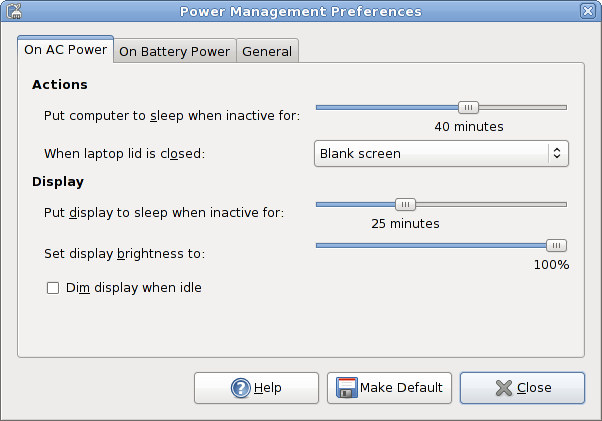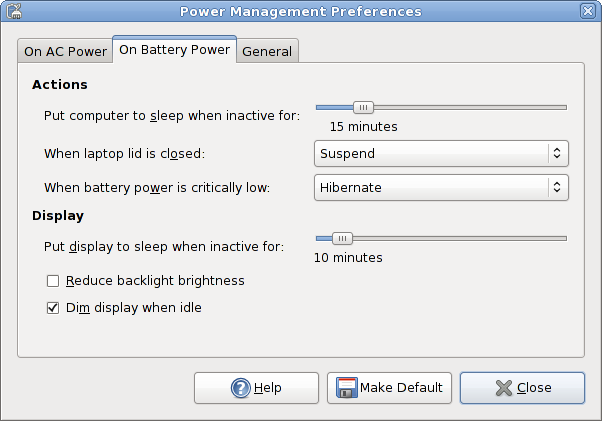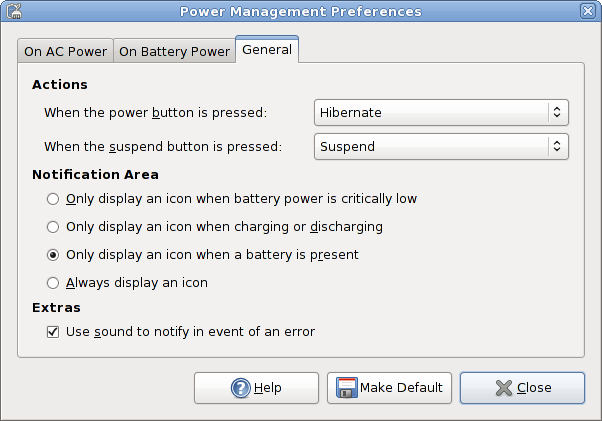Preferences
The preferences window allows you to control:
- The LCD brightness when on AC and battery power
- The idle time for the screen power-down and suspend action
- The actions to perform when the laptop lid is closed
- The notification area icon policy
Some sliders or option boxes may be disabled if the GConf policy keys are not writable. This allows administrators to lock-down the actions that a user can select.
- 5.1. AC Preferences
- 5.2. Battery Preferences
- 5.3. General Preferences
- 5.4. Session and system idle times
5.2. Battery Preferences
This allows a powerful computer to reduce the power usage when idle, or when the full capabilities are not required.
5.4. Session and system idle times
gnome-screensaver is a session daemon that monitors user input, and if the mouse has not been moved, or the keyboard been pressed then it starts a timeout. When the value of this timeout reaches the value set in gnome-screensaver-preferences, then the login is marked as 'session idle'. This is when GNOME Power Manager performs all the session idle actions such as enabling low-power mode and lowering the laptop panel brightness.

As soon as the session is marked as idle, GNOME Power Manager starts its own 'system' timer. When the timeout set in gnome-power-preferences is reached, and the CPU load is idle, then the idle action is performed, which is usually to turn off the screen, or to suspend or hibernate.
To make this clearer, the sliders in gnome-power-preferences are set to start at the value of the session-timeout plus one minute, as we cannot logically trigger before the session is marked as idle. If you adjust the value of the 'session idle' timeout in gnome-screensaver-preferences then the start of the sliders in gnome-power-preferences will change accordingly.



